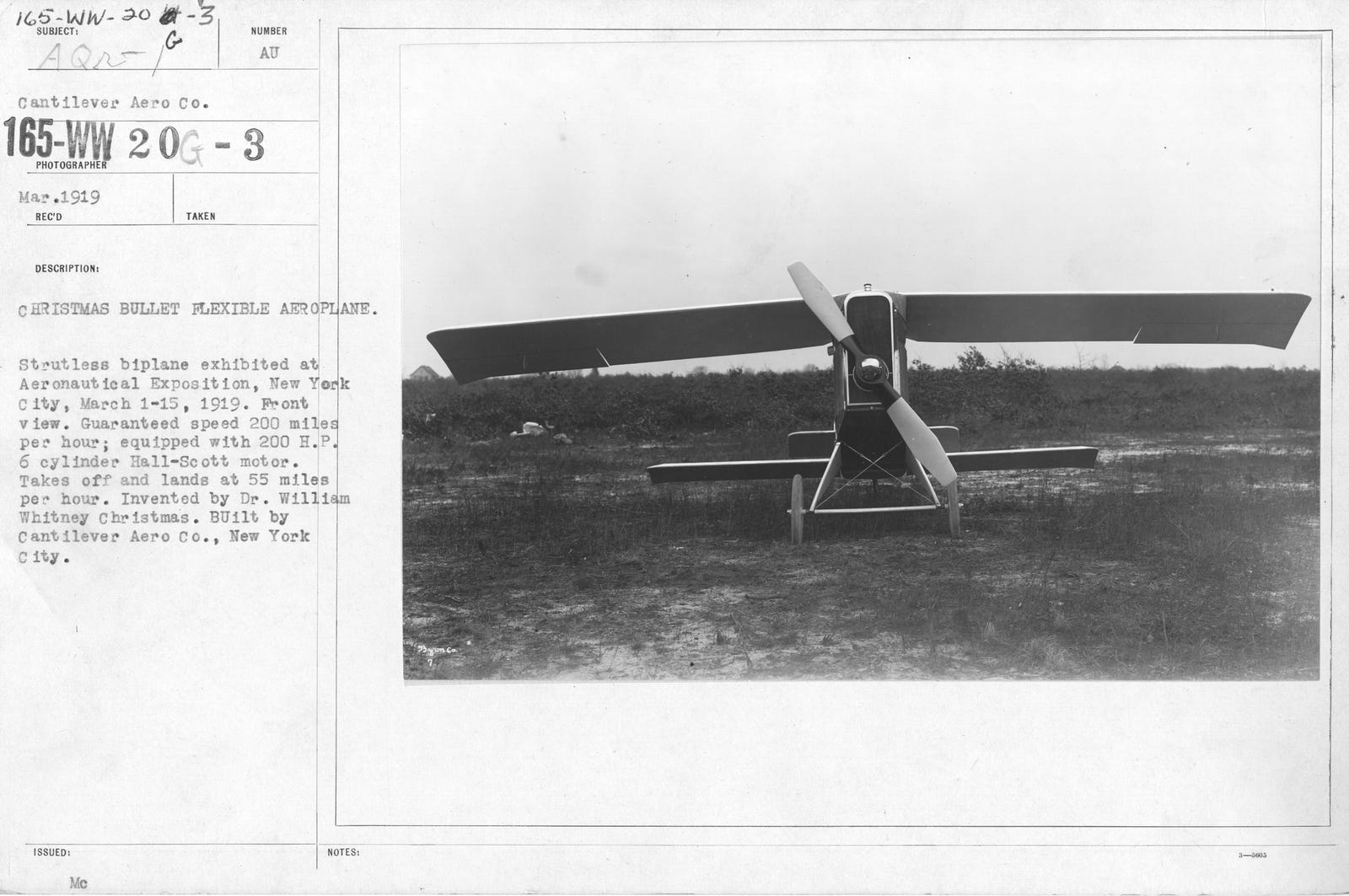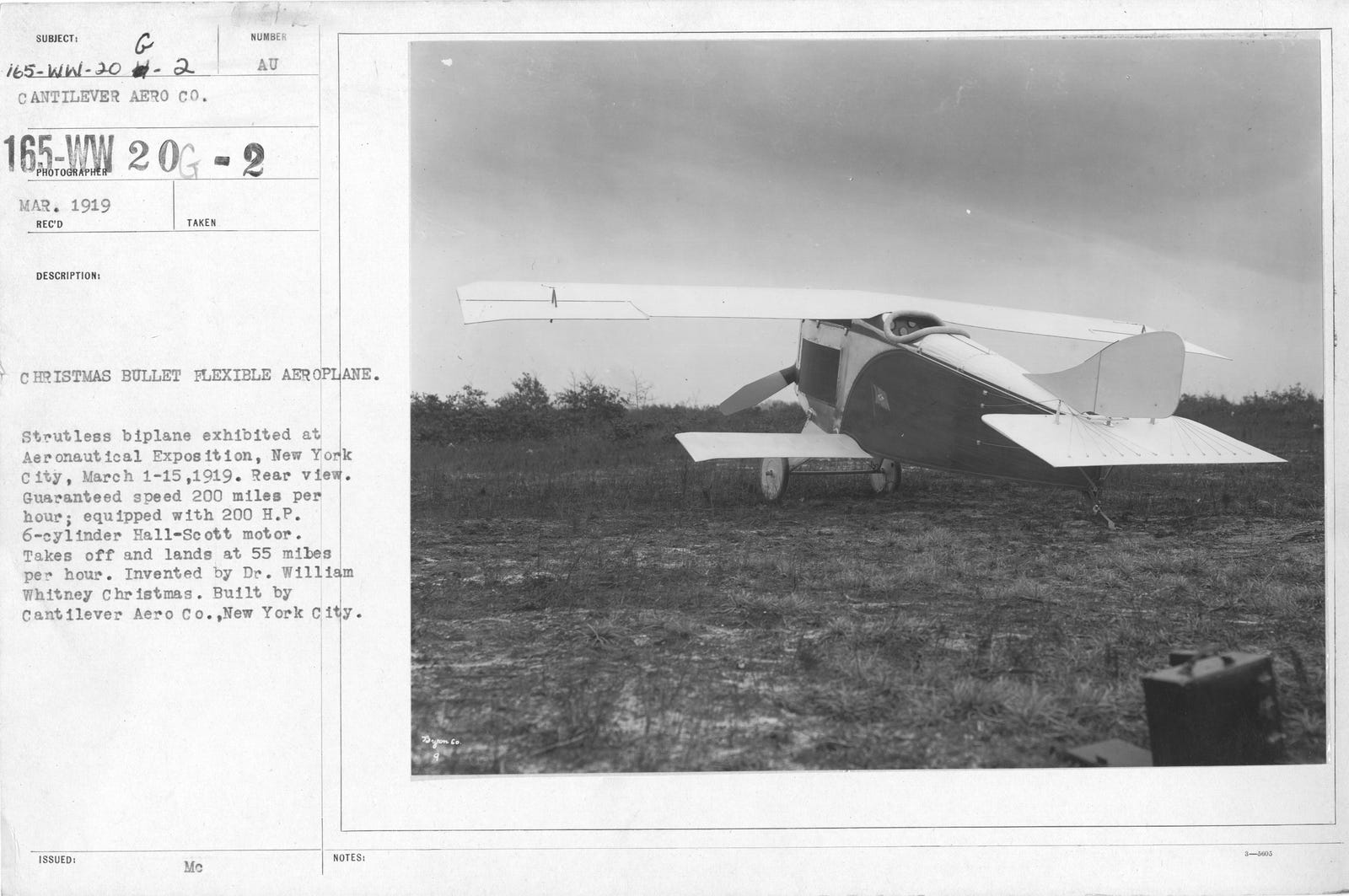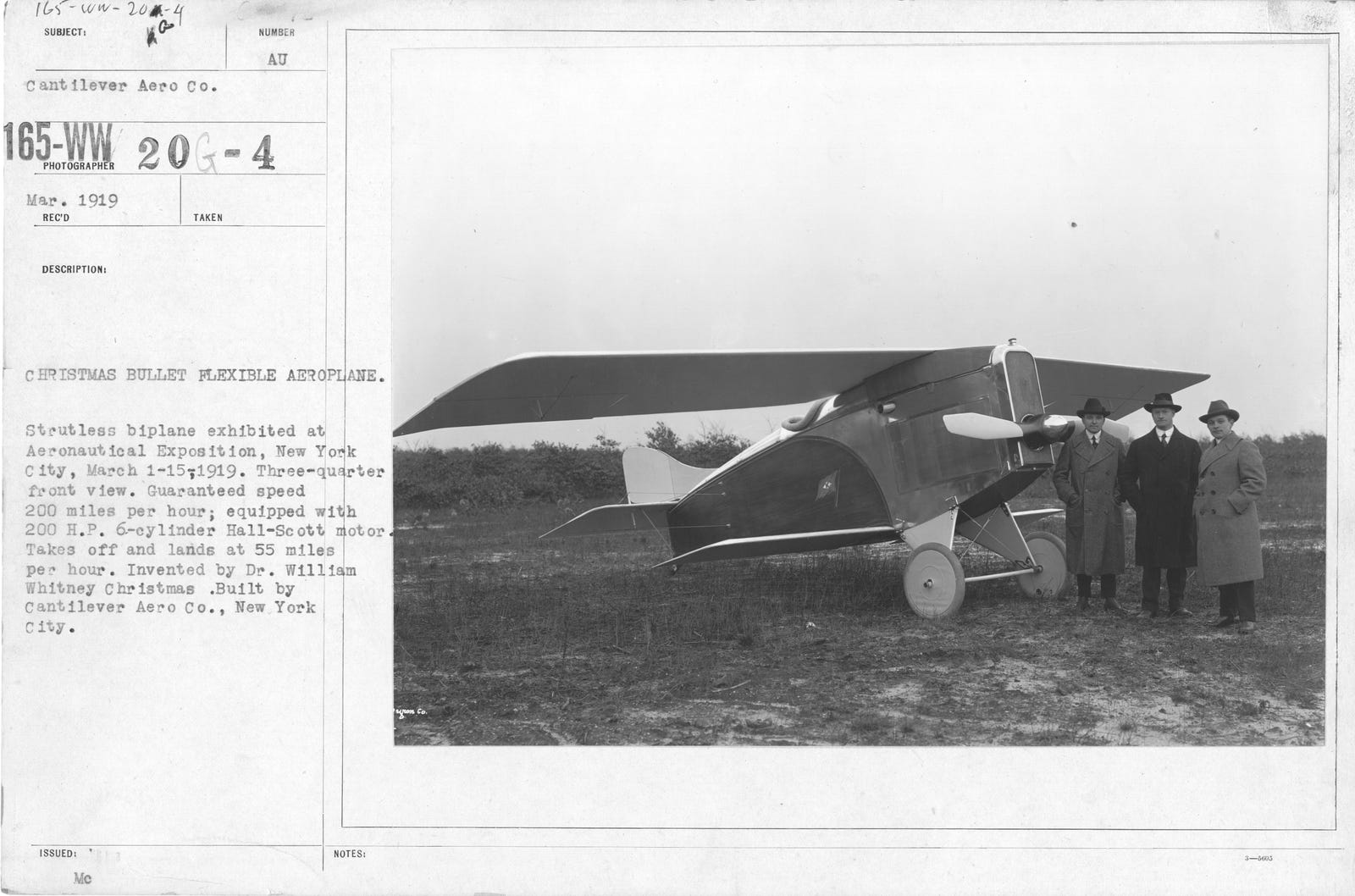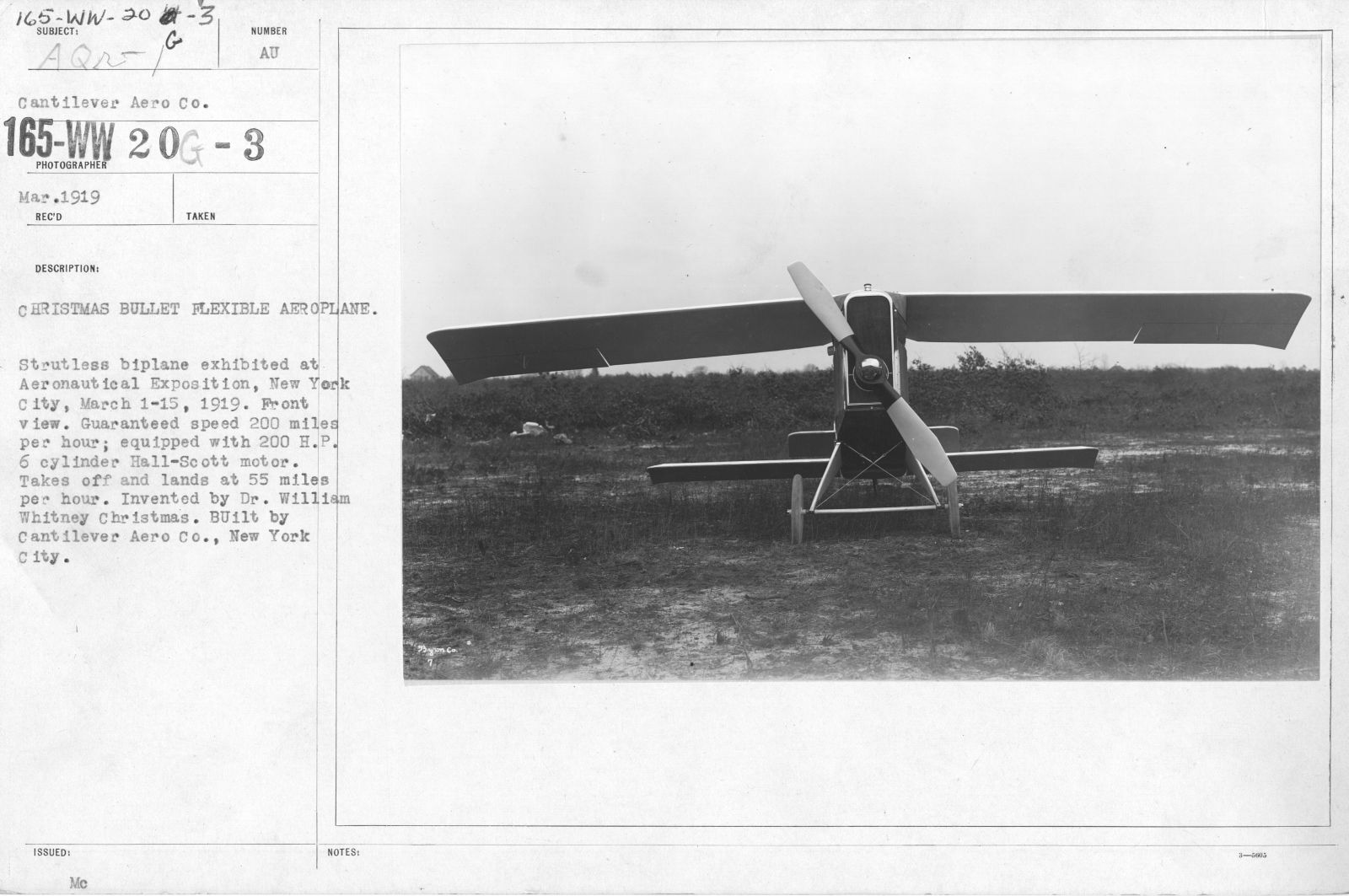It was the worst military aircraft of all time. Developed by a man described as “the greatest charlatan ever to see his name associated with an airplane,” the Christmas Bullet was the rare kind of fighter which had a perfect kill ratio: it killed everyone who ever tried to fly it.
The Christmas Bullet is a product of a bygone age when a lone madman could get rich convincing a New York senator, an established aerospace firm, and the U.S. military all at once that he could develop the greatest aircraft the world had ever seen.

The plane was the brainchild of Dr. William W. Christmas, a conman and a psychopath generously described by the Smithsonian Institute as a “pioneer in aeronautical research.” Dr. Christmas did not have a doctorate in engineering; he was a medical doctor, albeit one for whom the Hippocratic Oath appears to be more of a set of loose suggestions than strict guidelines.
Advertisement
Fortunately for Christmas, nobody else had any real qualifications either in those days.
After all, the Wright Brothers were just a couple of bike mechanics, so it wasn’t that implausible when Christmas claimed to be a brilliant aerospace pioneer. Christmas claimed he successfully built and flew an airplane in 1908, but he also claimed he burned the plane and all evidence of its existence to protect his design secrets. He also built and flew an aircraft called the Red Bird, which he patented and claimed to have designed himself despite being a near-exact copy of the AEA Red Bird, a plane built by a company entirely unrelated to Dr. Christmas.
Despite Christmas’s questionable record of achievements, on October 26, 1909, Creed M. Fulton, Lester C. McLeod, and Thomas W. Buckley entered into a business arrangement with him, founding the Christmas Aeroplane Company. Within a year, Fulton would sue his business partners for chicanery and by 1912 the group split up, Fulton’s partners having invested several thousand dollars in Christmas with nothing to show for it. Not to be discouraged, Christmas continued to be a presence in airshows, shamelessly promoting himself despite his utter lack of any engineering skills whatsoever.
Advertisement
When the First World War broke out, Christmas sensed opportunity. Writing an article for the New York Times on December 5, 1915, Christmas claimed to have developed a new bomber. The bomber, which he dubbed the “Battle-cruiser”, was said to be the largest heavier-than-air craft ever built—manned by a crew of six and powered by a 1,600 horsepower motor. Christmas added that the European allies had already ordered eleven of the aircraft, which promised to be a revolutionary success.
The only problem was that no such airplane, and no such order, existed.
Realizing that he needed a real airplane with an actual order to get rich, Christmas convinced Henry and Alfred McCorey, two brothers who owned a New York brokerage firm, to finance his project, an advanced reconnaissance and “super pursuit plane” named the Bullet, as recounted in First to Fly: North Carolina and the Beginnings of Aviation, by Thomas C. Parramore. He then approached New York Senator James Wolcott Wodsworth and the Continental Aircraft Corporation (CAC,) claiming the aircraft’s supposedly incredible performance would allow it to penetrate German airspace, thus allowing America to kidnap Kaiser Wilhelm II, forcing the Reich to capitulate. Although a prototype was finished by Fall of 1918, this insane plot was never carried to fruition because, among other things, Germany surrendered before the aircraft flew.
The Bullet’s claim to fame was its flexible wing, which was unlike that of any aircraft which had flown before. Christmas believed struts and braces were unnecessary, and that the lack of structure would allow the wings of the plane to flap like a bird. He also insisted that the wings be made of two sections with its steel parts welded together. Despite all known laws of aviation indicating the lack of internal support would cause the wings would snap and fall off, Christmas insisted the flexile wing would actually increase the aircraft’s safety.
Advertisement
Advertisement
It was powered by a Liberty L-6 engine, likely given to Christmas by the military on the insistence of Senator Wodsworth. The Army demanded they be allowed to inspect the plane, and that the engine only be used for ground testing, conditions which Christmas ignored. The aircraft was co-designed by CAC’s Vincent J. Burnelli, an unwilling participant forced into the project by the company. Burnelli, who later made pains to emphasize he only designed the fuselage of the plane, knew CAC had a lemon, as First to Fly noted:
…Burnelli told Christmas the upper wing must not be built as designed. The inventor had insisted that it be in two sections, its steel parts welded together. This left a joint that “you could have snapped… over your knee,” declared Burnelli. But Christmas persisted; he covered the wings with a burlaplike fabric that stretched where it should shrink and gave it numerous coats of acetate dope. According to Burnelli, the wings were so heavy that they had to be winched into place, and the tail assembly was too small for so heavy a plane.
It was a deathtrap. To Burnelli’s horror, Christmas and CAC were planning on having an actual human being attempt to fly the thing. Burnelli, after making his concerns known to no avail, resigned from CAC in protest. He went on to work with the Lawson Airplane Company of Green Bay and Milwaukee, where he would pioneer the concept of the lifting fuselage.
Advertisement
The Bullet’s first ill-fated test pilot was a man named Cuthbert Mills, a former Army-aviator-turned-pilot for the U.S. Mail Service (I’ve seen some sources claim Mills was a down-on-his luck unemployed former pilot, but the Jan. 11, 1919 issue of Air Service Journal lists him as a pilot for the Postal Service. Multiple sources list him as a former Army aviator, although ASJ does not mention it).
Mills, apparently quite proud of being selected as the test pilot for this supposedly cutting-edge aircraft, invited his mother to watch him take the Bullet on its first test flight somewhere between December, 1918 and January, 1919. (Sources differ on the exact date.) Mrs. Mills could only watch in horror as the Bullet’s wing fell off a few hundred feet in the air, leaving her son to spiral to his death over the property of one E.J. Jennings. Utterly unrepentant, Christmas would cover up the incident and claim the test flight was a resounding success.

Aviation journalist JD Van Vilet, an admirer of Christmas, falsely claimed the aircraft had successfully completed five test flights and now-deceased Mills had landed safely and praised the Bullet’s handling capabilities. Van Vilet would continue to write false stories praising the Bullet into the 1930s, claiming in the July, 1934 issue of Popular Aviation that the aircraft was the precursor to the cantilever monoplane despite the fact that world’s first cantilever monoplane, the Junkers J1, was successfully tested three years before Cuthbert Mills stepped foot in the Bullet. The article also admitted, decades later, that the aircraft had indeed crashed, killing Mills, although it was quick to add that it was due to pilot error and not any mistake on the part of Dr. Christmas. Van Vilet failed to mention his previous fraudulent claims. Others were less sympathetic, according to First to Fly:
Vincent Burnelli, who stayed in touch with the project, gave a very different account. Several pilots, he asserted, refused to fly the bullet before Mills agreed to do so. On his first try, the wings fell off, and it crashed, killing him. “At least I figured,” wrote Burnelli, that this would be the end of the Christmas Bullet. “But I underestimated the Doc.”
Christmas somehow managed to keep Mills’ demise quiet, but he still had a problem. The crash of the first Bullet left him without an engine for the next prototype. Christmas convinced the Army to loan him a propeller for a second Bullet. He did not inform them of the fate of the first Bullet and the engine they had loaned him. On March, 1919, Christmas would use the new airframe for a static display at a New York air show, claiming it to be “the safest, easiest plane in the world,” while shamelessly promoting his contraption to the media. An article in Flight magazine noted that “it would seem” that the design and construction of the aircraft would result in a “low factor of safety,” but reassured readers that “the designer claims a safety factor of seven throughout.”
Advertisement
Advertisement
It went on to falsely claim, presumably on Christmas’s word, that Britain and France had expressed interest in sizeable purchases of the aircraft due to its allegedly tremendous speed. No mention was made of Cuthbert Mills’ untimely demise. A month later, Christmas was ready to try again, the next test pilot a man by the name of Allington Jolly, a decorated war veteran who served with distinction in the French Air Force. Shortly after taking off, Jolly lost control of the aircraft, which plummeted into a barn, killing him instantly. This incident was also covered up, and Christmas and the McCorey brothers would appear in a May, 1919 issue of Vanity Fair promoting the Bullet’s supposedly flawless safety record.

Despite getting away with it all so far, Christmas must have realized that he couldn’t keep killing people forever. Further production and testing of the Bullet was halted although he continued trying to sell the Bullet to the military, claiming it dramatically outperformed contemporary British and French fighters during a testimony to the House Select Committee on Expenditures in the War Department. Christmas insisted to Congress that he had photographic evidence several successful test flights, but the negatives were hidden or destroyed by the government as part of a malevolent conspiracy against him. By 1923, he called it quits, billing the Army $100,000 for his patented wing design.
Advertisement
Christmas never stopped making outrageous claims, insisting that Germany had offered him one million dollars to rebuild their air force and that he had invented the aileron, yet somehow never seemed to lose any credibility for it. He would end up the Vice President of the General Development Corporation, a Miami-based real estate company.
He died a rich man in 1960, almost a century old.
That’s what stands out as the most unbelievable part of the Christmas Bullet story. After misleading a senator, misappropriating an engine from the U.S. Army, manipulating a major aircraft corporation, killing two men and swindling the government out of a large sum of money, Christmas suffered no repercussions whatsoever and continued to live a life of victory and success.
Advertisement
Advertisement
J. Tyler Lovell: recent graduate of the University of Kentucky, MA in Diplomacy, specializing in Security Studies. Likes airplanes, currently looking for a job.















